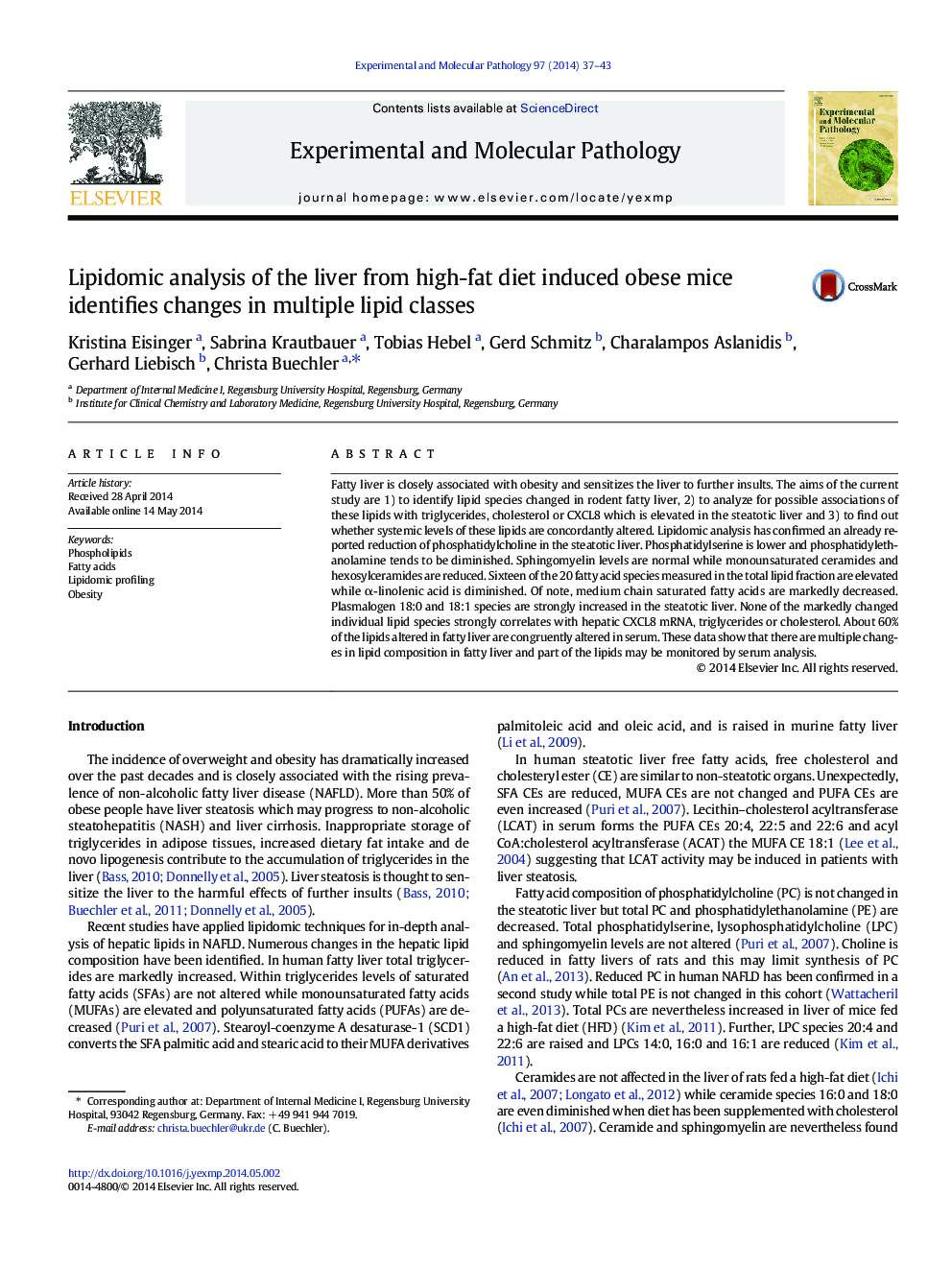| Article ID | Journal | Published Year | Pages | File Type |
|---|---|---|---|---|
| 5888325 | Experimental and Molecular Pathology | 2014 | 7 Pages |
â¢Phosphatidylcholine is diminished in the steatotic liver.â¢Capric acid, lauric acid and α-linolenic acid are reduced in the fatty liver.â¢Plasmalogen 18:0 and 18:1 species are increased.â¢About 60% of the lipids altered in fatty liver are congruently altered in serum.
Fatty liver is closely associated with obesity and sensitizes the liver to further insults. The aims of the current study are 1) to identify lipid species changed in rodent fatty liver, 2) to analyze for possible associations of these lipids with triglycerides, cholesterol or CXCL8 which is elevated in the steatotic liver and 3) to find out whether systemic levels of these lipids are concordantly altered. Lipidomic analysis has confirmed an already reported reduction of phosphatidylcholine in the steatotic liver. Phosphatidylserine is lower and phosphatidylethanolamine tends to be diminished. Sphingomyelin levels are normal while monounsaturated ceramides and hexosylceramides are reduced. Sixteen of the 20 fatty acid species measured in the total lipid fraction are elevated while α-linolenic acid is diminished. Of note, medium chain saturated fatty acids are markedly decreased. Plasmalogen 18:0 and 18:1 species are strongly increased in the steatotic liver. None of the markedly changed individual lipid species strongly correlates with hepatic CXCL8 mRNA, triglycerides or cholesterol. About 60% of the lipids altered in fatty liver are congruently altered in serum. These data show that there are multiple changes in lipid composition in fatty liver and part of the lipids may be monitored by serum analysis.
